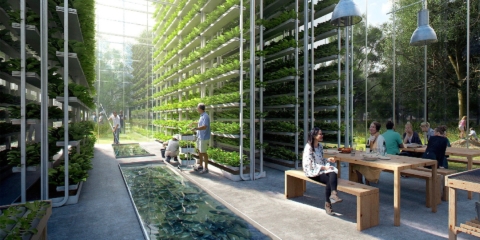Would you like to get notifications from Christian?
In a major breakthrough for renewable energy, scientists have developed a new way to make hydrogen fuel using nothing but air and solar power. Hydrogen is seen as a crucial part of our efforts to wean ourselves off fossil fuels, but making it in an environmentally friendly way has always been a challenge. This new technique makes it possible to produce hydrogen fuel in even the driest climates, opening up new possibilities for sustainable energy production.
Hydrogen has the potential to play a major role in decarbonizing the energy sector. It can be burned just like conventional fuels, but the only byproduct it releases is water. This makes it a very attractive option for applications where reducing emissions is a priority, such as in transportation, mobility, shipping, and aviation.
The new technique makes use of a special type of metal alloy that can split water molecules into hydrogen and oxygen using only the energy from sunlight. This process, known as photocatalysis, is very efficient and can be used in a variety of different settings, including desert regions where water is scarce.
The researchers are now working on scaling up the technology so that it can be used to produce hydrogen on a commercial scale. If successful, this could be a major step forward in our efforts to create a sustainable energy future.
Do you have any questions or comments? We’d love to hear from you! Leave us a message below and we’ll get back to you as soon as possible.
Source: https://singularityhub.com/2022/09/09/scientists-created-hydrogen-fuel-from-air-using-solar-power/
Author: Christian Kromme
First Appeared On: Disruptive Inspiration Daily
Christian is a futurist and trendwatcher who speaks about the impact of exponential technologies like AI on organizations, people, and talents. Christian tailors his presentations to your audience's specific industries and needs.



Our world is changing at an exponential rate! A big tidal wave of digital transformation and disruption is coming at us fast. Many organizations see this wave as a threat and experience stress, but there are also organizations that just see this wave as an opportunity.

Imagine sitting with just 10-15 fellow executives at a premier location, gaining clarity on the impact of AI on your industry while enjoying an exquisite dining experience. These are not just meetings—they are transformative moments that will shape the future of your organization



In the future, 3D printing and generative design will allow for products to be designed in a more decentralized manner, and production will take place closer to the customer and fully on-demand. 3D printing technology will also allow for more customization and personalization of products.


The agricultural industry is ripe for disruption. Robotics, AI, and IoT are all technologies that have the potential to radically transform the way we grow food. In combination with vertical farming, these technologies could increase the efficiency and quality of agricultural products.

A human-centered society is one that puts people first and where technology is used to unite and empower people. It is a society that values biological life and dignity above all else. It is a society that recognizes the importance of human relationships and works to strengthen them. In a human-centered society, all members of the community are valued and treated with respect.


The future of healthcare is here. New technologies like AI, IoT, big data, and smart sensors make it possible to become the CEO of your own health. Imagine that your phone can listen to your voice and AI algorithms can detect small nuances in the tone of your voice that indicate specific diseases.
